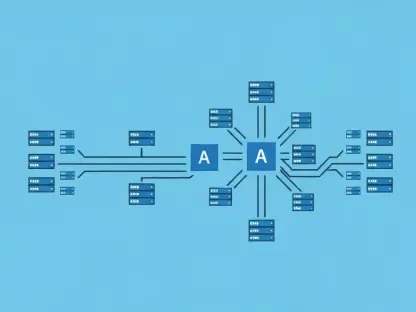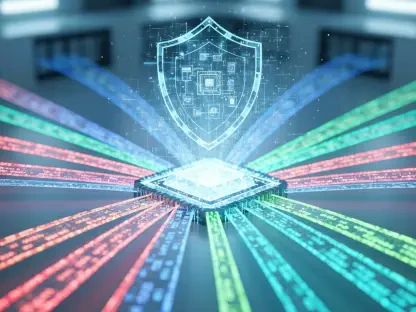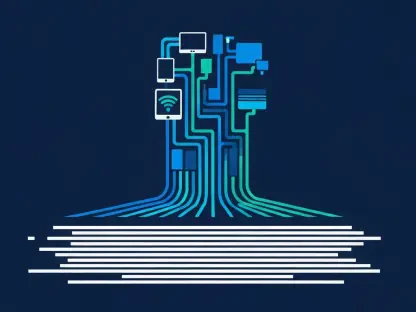The digital era presents unique challenges for bolstering cybersecurity defenses. As threats multiply, the urgency for proactive measures grows. This article delves into current issues, strategies, and innovative solutions necessary for navigating the complicated terrain of digital security. Understanding the evolving landscape and applying forward-thinking approaches are key to maintaining robust cybersecurity postures.
The Reality of Persistent Threats
Cybersecurity threats continue to evolve at an unprecedented pace. From widely exploited zero-day vulnerabilities to sophisticated malware, the attack landscape is complex, demanding constant vigilance. Recent incidents underscore the critical importance of staying updated with patches and enhancements, showcasing the relentless efforts of cyber adversaries to exploit weaknesses. The evolving diversity of cyber threats requires a dynamic approach to safeguard against increasingly sophisticated attack vectors.
Understanding the diverse nature of these cyber threats is crucial. Whether they stem from software flaws, insider threats, or targeted attacks, the concept of an ever-present danger is a reality for all organizations. Ensuring systems are resilient against such threats involves a multi-layered defense mechanism that includes regular security assessments, comprehensive incident response plans, and continuous monitoring of potential vulnerabilities. Moreover, organizations must recognize that no system is impervious to attack and must be prepared to address breaches when they occur.
Navigating Security Vulnerabilities
The importance of promptly addressing security vulnerabilities cannot be overstated. Software tools like WinRAR and widely-used platforms such as WhatsApp are recurrent targets due to their extensive user base. This widespread usage makes them lucrative targets for cybercriminals who seek to exploit unpatched vulnerabilities. Regular updates and patches are essential to ensure that these software tools remain secure against the latest threats, providing an added layer of defense for users.
Organizations must have stringent update protocols in place. Regular patching and continuous monitoring are foundational practices to thwart the exploitation of vulnerabilities, enhancing overall defense mechanisms. Implementing automated systems that detect and apply patches can significantly reduce the window of vulnerability. Additionally, conducting regular security audits and adopting a proactive stance toward vulnerability management ensures that potential weaknesses are identified and rectified before they can be exploited.
Balancing Security Tools and Platform Fatigue
The proliferation of security tools can overwhelm cybersecurity teams. With countless dashboards, alerts, and product obsolescence, managing an array of security products often leads to inefficiency. The resultant platform fatigue can dilute the effectiveness of security measures, as teams struggle to prioritize and manage the deluge of information. This environment creates an urgent need for a streamlined approach to security tool integration.
CISOs face the challenge of integrating these tools into a cohesive security strategy. Simplifying the security stack and leveraging integrations are proven strategies to reduce platform fatigue and enhance operational effectiveness. Consolidating security tools to ensure compatibility and interoperability can lead to more efficient threat detection and response. Furthermore, investing in platforms that offer centralized management and analytics capabilities can help distill valuable insights from a complex security environment, enabling more informed decision-making.
Political Movements and Cybersecurity Implications
National policies, like executive orders, can significantly impact cybersecurity processes. Instances such as the revocation of security clearances from cybersecurity veterans highlight the overarching influence of politics in this domain. The political landscape can profoundly shape the cybersecurity strategy and operations of organizations, influencing resource allocation, priority setting, and overall strategic direction. It behooves cybersecurity professionals to stay abreast of these developments and anticipate their potential effects on their work.
Understanding the implications of such decisions is vital. They not only affect individual careers but can also shape the strategic direction and morale within cybersecurity organizations. Policy-driven changes necessitate agility and adaptability within organizations to align with new mandates while maintaining operational integrity. This intersection of cybersecurity and governance underscores the need for robust, adaptable security frameworks that can withstand and adjust to political and regulatory changes.
The Role of Cyber Simulations
Proactive measures, such as cyber crisis simulations, are invaluable. They prepare organizations for potential breaches, test response strategies, and identify weaknesses before they are exploited by malicious actors. Conducting regular simulations provides a realistic assessment of an organization’s preparedness, highlighting areas for improvement and reinforcing the importance of comprehensive incident response plans. These exercises enhance an organization’s ability to respond effectively to actual incidents and mitigate damage.
Cyber simulations foster a culture of readiness and resilience, ensuring that teams can efficiently handle real-world incidents when they occur, leading to a stronger overall security posture. By simulating various attack scenarios, organizations can refine their response protocols, ensuring coordination and communication among different teams. Such preparedness instills confidence within the organization and ensures that all stakeholders are well-versed in their roles during a cyber crisis, minimizing potential disruptions and losses.
Value of a Strong Security Culture
A robust security culture is essential, especially in sectors like cryptocurrency. Effective management of digital assets necessitates a comprehensive approach to security, including secure key management and protection of wallets. With the unique risks posed by adversary tactics and the high stakes involved in cryptocurrency transactions, instilling a strong culture of security becomes even more critical. This involves ongoing education, clear policies, and a shared commitment to safeguarding digital assets.
Embedding security deep within organizational culture fortifies defenses against targeted adversary tactics, driving the importance of cohesive security practices throughout the enterprise. Regular training and awareness programs ensure all employees understand their role in maintaining security and adhering to best practices. Encouraging a proactive mindset toward security issues and empowering employees to report potential threats contributes to a resilient security culture that can effectively counteract a wide array of cyber threats.
Strategic Alignment and Business Integration
Aligning cybersecurity strategies with overarching business goals transforms security from a mere operational necessity to a strategic business enabler. CISOs must work closely with other business leaders to ensure that security measures complement business objectives, demonstrating how robust cybersecurity can drive business success. This strategic alignment necessitates a deep understanding of the business landscape, enabling the development of tailored security initiatives that protect and promote the organization’s key goals.
Integrating agile methodologies to manage third-party risks and build strong partnerships illustrates the multifaceted role of modern cybersecurity in business strategy. Providing a framework that is responsive to both internal and external changes allows for more dynamic risk management approaches. Effective agility in addressing third-party security concerns, combined with strong communication channels and trust-building, ensures that cybersecurity remains a core component of the organization’s overall strategy, driving competitiveness and resilience.
Innovations in Cybersecurity Practices
In today’s digital age, we are faced with distinct challenges in strengthening cybersecurity measures. As cyber threats grow in number and complexity, the need for proactive strategies has never been more pressing. This article explores the current obstacles, effective strategies, and cutting-edge solutions essential for maneuvering the intricate landscape of digital security. To maintain a solid cybersecurity stance, it is crucial to understand the evolving nature of threats and implement innovative, forward-looking approaches. Cybersecurity isn’t merely about reactive measures; it’s about anticipating and preventing breaches before they occur. This involves investing in advanced technologies, comprehensive training for employees, and constant vigilance against potential vulnerabilities. Equally important is the development of regulatory frameworks and collaboration across industries to share threat intelligence. By adopting a holistic and proactive approach, organizations can enhance their resilience against cyber attacks and safeguard their critical assets in this ever-changing digital environment.








